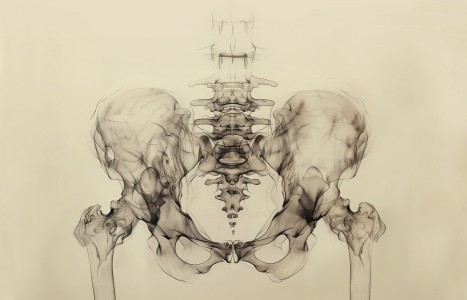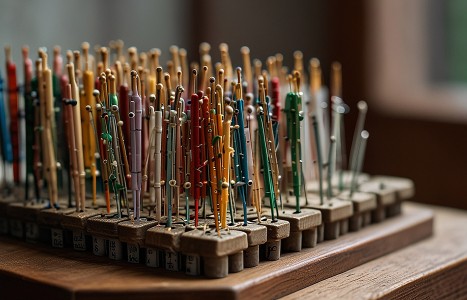People today want convenience, whether it be from their bank, credit card, favorite retail store, or restaurant. They demand it from the companies who hold their loyalty, including their health care providers (you). They don’t want to call and possibly be put on hold, and they want to use an app or schedule an appointment on your website. Here are three reasons your practice can gain by switching to online appointment scheduling.
The Drum of Chinese Medicine's Modernization Beats Loudly
Modernizing traditional Chinese medicine (TCM), sustainable growth and the utilization of herbal resources, and studying the efficacies and safety of TCM therapies were some of the hottest topics discussed at the Second International Science and Technology Conference on Traditional Chinese Medicine, held in Chengdu, capital of southwest China's Sichuan province, from Sep. 25-27, 2005. Considered one of the best international conferences in China on TCM, it drew more than 3,000 government officials, representatives from pharmaceutical firms, scientists, and researchers from 43 countries and regions around the world. The three-day conference (information about which can be accessed at www.icetcm.com) displayed the latest science and technology in traditional Chinese medicine, industrial prospects and international cooperation.
I was invited by the conference to administer a speech on the growth of TCM practice in the U.S. at a satellite meeting held on the 25th. In the past, I have attended many conferences in China, which classified themselves as "top-level" conferences. I was impressed, however, by the true international crowd that this particular conference attracted, and the rich content and information presented at the conference. The strong interest on the development and modernization of TCM was shared by both overseas and domestic attendees. One of the most significant pieces of information was that the Chinese government has designated traditional Chinese medicine production as a strategic industry. Minister of Science and Technology Xu Guanhua said that the Chinese government has mapped out a detailed strategy in developing the traditional medicine industry. Modernization of the medicine has been inscribed in the country's primary agenda for scientific and technological exploration. The country's production value of traditional Chinese medicine was approximately 95.8 billion yuan (about 12 billion dollars U.S.) in 2004, up 18.3 percent from the previous year.

Development and Popularity of Chinese Medicine Around the World
Jiang Mingwei from Weill Medical College of Cornell University presented "Globalization of Chinese Medicine Industry," which proposed the application of Western industry management procedures to the TCM industry. Shaw Chen, MD, PhD, an associate director at the Office of Drug Evaluation V, Center for Drug Evaluation and Research, Food and Drug Administration, and a member of the FDA's Botanical Working Group, indicated that the FDA has been adjusting its evaluation procedures for botanical drugs, including Chinese herbal medicine. Problems with quality control technologies will be solved, and more botanical drugs will be allowed to undergo clinical studies. In June 2004, the FDA published its Guidance for Industry for botanical drug applications, which detailed procedures and requirements for botanical preparations (including Chinese herbal formulations) to enter clinical phase I, II and III studies. Ning Li, PhD, another FDA official, pointed out that clinical studies of Chinese herbal medicine must be performed under the guidance of Good Clinical Practice (GCP) to ensure the reliability of study results.
The Committee on Herbal Medicinal Products (HMPC), a European Union-mandated group, is actively pursuing a regulatory environment among EU members, said Dairine Dempsey, PhD. An agreement had been reached by all members on Apr. 30, 2004 that by Oct. 30, 2005, a simplified registration system should be established for traditional botanical medicinal products, and that by Apr. 30, 2011, all traditional botanical products should be registered. EU member countries have become the largest consumers of Chinese herbs and botanical drug products, said an official from the Italian Ministry of Health, Giuseppe Pimpinella. The Italian market is the same as those in Germany, France and England, where traditional herbal medicine products are sold as food supplement or cosmetics, but no therapeutic claims can be made. Mr. Roy Alder, from the British Department of Health's International Industry Division, added that Great Britain has been the largest market for Chinese herbal medicine in the EU, with an annual estimated market size of $200 million.
Inheritance and Innovation of Chinese Medicine Theories
The right balance between inheritance and innovation of TCM theories has long been debated in the development of Chinese medicine in China. TCM has had its own traditional theory for thousands of years. Clinical usage of TCM theory has demonstrated its uniqueness as a practical tool. However, the spectrum of diseases changes dramatically over time. TCM theory faces new challenges from social and industrial diseases in modern society. It is equally important to inherit the TCM tradition and encourage innovation by absorbing modern acknowledgement of science and technology. Many papers presented during the conference focused on studying "zhang xiang" (state of viscera), meridians, herbal medicine, formulation theory, etc. Some research has been supported by grants from the Ministry of Science and Technology (www.most.gov.cn/eng/), including the National Basic Research Program (also called the 973 Program), China's ongoing national keystone basic research program (www.973.gov.cn/English/Index.aspx).
Scientific methodologies such as systematic biology, genomic mapping, mathematics, and information technology have been applied to modern explanations of TCM theory. Professor Jiang Yongguang studied herbal medicine targeting through the meridian system based on data-mining technology. A study from Tokyo City Medical Institute explored the possibility of establishing platforms to integrate systematic medicine and individualized medicine, an approach to integrate molecular, genetic and traditional medicine. In addition, a research group at China Pharmaceutical University proposed a novel strategy to study bioactive components through bio-membrane dialysis-HPLC and cell affinity extraction-HPLC methods. This approach has been successfully applied in studying the multi-component, multi-site and synergistic actions of Chinese herbs.
The importance of inheriting TCM tradition has been emphasized. Professor Wang Yongyan from the Chinese Academy of TCM presented a keynote speech entitled "Reading Classical Works for Clinical Practice: An Important Approach for Education of Excellent TCM Clinicians." He ensured the audience that if one can read classical schools of thoughts in TCM and yi ching (as TCM is related to the theory of yi ching), learn from 3-5 of the best teachers, and treat more than a thousand patients a year, he or she can become an excellent TCM clinician.
Sustainable Development and Utilization of Herbal Medicine Resources in China
Varieties of papers focused on the resource of medicinal materials in a sustainable development process. These papers included survey of herbal resources, protection of botanical multi-species, cultivating the wild resources, alternative replacement for endangered herbal species, quality evaluation of herbal species, and inspection of superior and original herbs. This area of research is one of the fastest growing areas, and is incorporating some of the most advanced biotechnologies in China.
A complete systematic theory on the protection of herbal medicine resource is being established. One of the representative papers was presented by Professor Chen Shilin, entitled "The Establishment of a Developing System on a Sustainable Resource of Herbal Medicine in China." The paper outlined the structured concept of a sustainable development of herbal resource and detailed a plan for resource surveys of major herbs in and around China. This research is considered an important guide for strategically protecting China's herbal resource in a scientific base.
New technologies are applied in the management of herbal resources in China. For example, studies have reported using fingerprint technology, HPLC-DAD-MS or GC-MS, chemical labeling, or gene sequence analysis to identify herbal species. These new technologies have improved monitoring and evaluation of correct species of herbs from small batches to large field cultivation and harvesting.
Standardization of herbal preparation has been discussed thoroughly. One of the main developments over the past several years has been the establishment of Good Agriculture Practices (GAPs) in the cultivation of herbs. The key of GAP is standardization in the full process of herbal preparation, including quality of seeds, cultivation, plantation, harvesting, processing, manufacturing, formula quality standards, and storage.
Acupuncture Research
Evaluation of efficacies of acupuncture treatment drew attention also. Andreas Noll from Germany has studied the acupuncture treatment of headaches using better study designs. He has divided patients into acupuncture treatment groups, sham treatment groups and non-acupuncture groups, effectively eliminating the placebo effect.
Professor Wang Ping An at Hong Kong Chinese University combined the data of the Chinese Visible Human Project with virtual reality and visual imaging techniques, establishing an advanced digital virtual acupuncture model of the human body. The system can be used for acupuncture training and analysis of clinical disease treatment information, with features such as meridian display, 3-D localization of acupuncture points, and anatomical slicing of points.
Usage of High Technology in the Modernization of Chinese Medicine
Many papers have reported the integration of high technology in quality control, manufacturing and clinical evaluation of Chinese medicine. Professor Carelton Gajdusek of France, a Nobel laureate, presented a screening method for active compounds from Chinese herbal medicine using cell culture supported with nanotechnology. The biological clock theory also was integrated with the zi wu liu zhu theory (an ancient Chinese chronotherapy). Professors Halberb (from the United States), Otsuka Kuniaki (from Japan) and Song Kaiyuan (from China) studied theories in community health care and treatment of diseases caused by biological clock disturbance. Jan Van Der Greef from Leiden University (The Netherlands) presented a quality and efficacy evaluation system for Chinese herbal medicine utilizing systematic biology technique.
A research group in Tsinghua University ( China's version of MIT in Beijing) studied the complicity of multiple pharmacological actions of Chinese herbs using hierarchy method to "weigh" the effects of herbs in a logic and numeric way. Wu Bin and his group at Chengdu TCM University studied deficiency-cold syndrome using gene expression profile, tested by gene chips and mathematical modeling. The study is opening up new ways of looking into syndrome-gene expression profiles for an explanation of TCM theory.
Gao Shanlin at China Pharmaceutical University reviewed his group's 20 years of experience in the cultivation and production of Chinese herbs with support of biotechnology. Developing and breeding superior varieties of medicinal plants has demonstrated a significant increase in the quality and yields of herbs.
Prevention and Treatment of Major Epidemics and Diseases With TCM
The efficacies of TCM treatment have been clearly demonstrated in the treatment of new infectious diseases such as SARS, avian flu, AIDS, and pig-borne diseases (such as streptococcus suis, a recent outbreak in Southern China that infected 204 people) in China. The scientific community has recognized that with TCM treatment, the patients had reduced symptoms and fewer complications, and there was lower mortality.
It is clear that TCM treatment has a unique role in chronic diseases such as cancer, chronic kidney failure and stroke. Patients have seen symptom relief and quality-of-life improvement.
Many papers reported on individual therapies in treating different diseases, such as Professor Chen Keji's study on the therapeutic effects of xiong shao capsule on clogging of the blood vessels in coronary heart disease patients after invasive procedures. Professor Zhang Boli presented his findings on the treatment of vascular dementia with the herbal preparation jian nao yi zhi. His study showed significant improvement in the patients' mental and functional disorders.
Evaluation of Clinical Efficacy and Safety of Chinese Herbal Medicine
TCM products are regulated in China. Therapeutic TCM preparations are approved by the State Food and Drug Administration (SFDA; www.sfda.gov.cn/eng) as prescription drugs. The evaluation of the efficacy and safety of these herbal products has become a major issue in China. The following are some areas that have shown significant improvement:
- The Ministry of Science and Technology has initiated projects to establish key technologies and platforms to ensure monitoring of clinical studies of TCM herbal drugs. SFDA has begun a certification program to qualify institutions for clinical study of Chinese herbal drugs. These processes have improved the quality of the clinical study institutes.
- The design of new herbal drug studies has followed basic scientific designs such as randomization, placebo controls, multi-center observations, etc.
- Internationally recognized standards such as Good Clinical Practice. GCP guidance has drastically improved the quality of clinical studies of Chinese herbal drugs.
- Database management and biostatistic analysis have been implemented into clinical studies of new herbal drugs. Some projects have incorporated remote input of clinical data to coordinate multi-center studies.
- Pharmacokinetic studies of new herbal drugs have begun in some research institutes.
In conclusion, the Second International Science and Technology Conference on Traditional Chinese Medicine evaluated the recent advancements of TCM in China. The march toward modernization of TCM is well on its way. The key players in this process come from governmental agencies, industry entities, educational institutions, and most importantly, the consumers.
The modernization and globalization of TCM is obviously beneficial to China's overall ambitious plan. Its success will not only benefit the health care system in China and around the world, but also create a huge opportunity for the industry, from small farmers in the growing and harvesting fields to big pharmaceutical companies that manufacture a large quantity of TCM products. The keys to these successes are quality and safety. This conference shed some light over these particular areas, and made it clear that we are approaching a very exciting and forward-thinking time for TCM in China.



